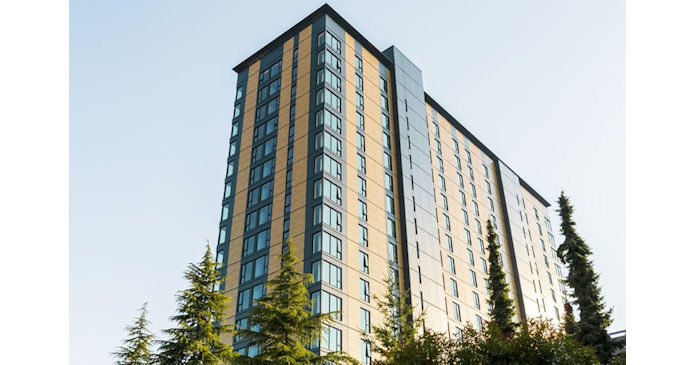Interest has been growing in expanding the use of wood in the structures of tall buildings. Changes to building codes are coming that will enable this to happen.
Where are we coming from
While wood has long been used in construction, building codes have restricted its use. Until 1999, building codes allowed for wood frame buildings to be 3 stories (40 ft) high. Revisions to building codes allowed for wood frame buildings to be 5 stories (70 ft) high from 1999-2015, and 6 stories high (70 ft) since 2015.
While taller buildings can currently be built of wood, the lack of support for this in building codes means that the design of each building must be individually approved through a waver process. This lengthens the time required to get buildings approved and built.
Why wood?
Wood has two inherent advantages over steel and concrete for building construction. The first is that it is much lighter than steel and concrete construction, which means that the building’s foundation can be designed to support less weight, reducing cost. The second advantage is that the structure of the wood is formed with carbon the tree removed from the atmosphere, so locking up wood in a building is a form of carbon sequestration. It reduces the amount of the greenhouse gas carbon dioxide in the atmosphere.
To be clear, we are not talking about building with two by fours here. The buildings being envisioned would be built with large timbers or, more likely, engineered beams and panels. The engineered components would be manufactured by laminating together many smaller wood pieces using adhesives or nails. They would be fabricated in factories, brought to the construction site and assembled into the building.
Construction using these large wooden members goes by the name “mass timber”.
Where are we going
Changes to the International Building Code to allow mid-rise buildings to be constructed of mass timber recently took a step forward. The ad hoc committee created by the International Code Council (ICC) to study the changes required to support safe mass timber construction has reportedly voted to approve changes in the 14 areas of the code identified as requiring modification. There is still a period of comment and revision ahead, but the changes appear to be on track to be implemented in the 2021 revision of the International Building Code (IBC).
As presently envisioned, the IBC will define three classes of mass timber construction. The most rigorous of them would allow buildings of up to 18 stories tall.
Tall mass timber buildings are not just an architect’s dream. Brock Commons – Tallwood House, a student residence at the University of British Columbia, Canada, is currently the world’s tallest mass timber building at 18 stories. While the building has a concrete core around the elevators, the bulk of the structure was constructed of mass timber. It contains 33 four-bedroom suites and 272 studios, all with kitchens.
As urban centers push for more transit oriented development and higher density construction, perhaps a mass timber building is in your future.














